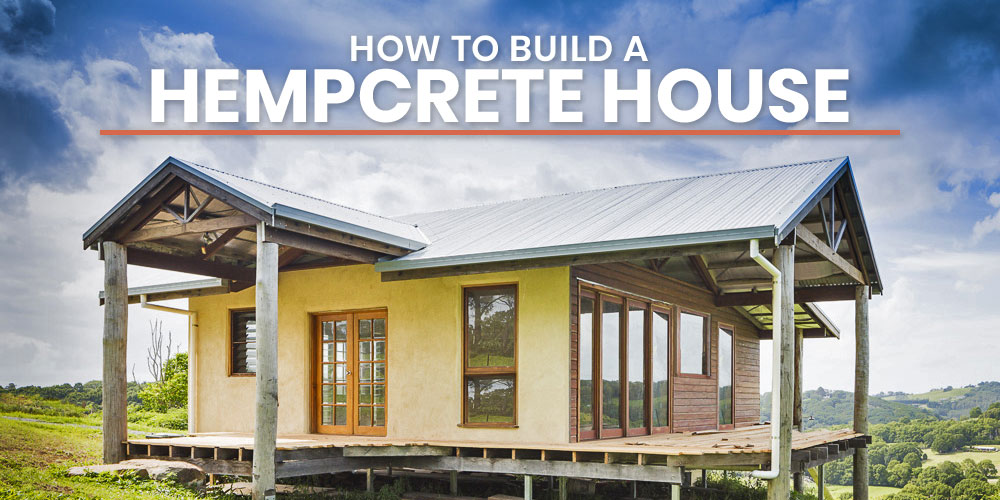
NAVIGATION
Hempcrete is a lightweight bio-composite building material, made by mixing the inner woody core of the hemp plant with a lime-based binder. Building hempcrete houses has become increasingly popular over the past few years, and I can see why.
There are many reasons why building with hempcrete over other materials, like classic concrete, just makes sense!
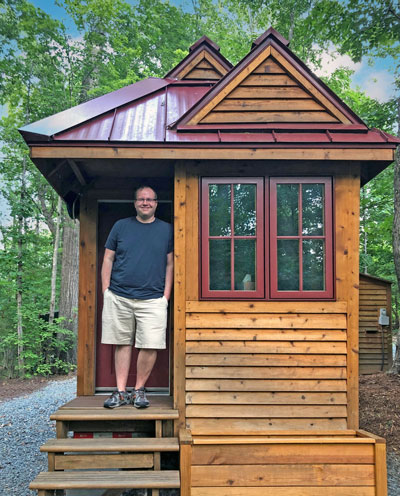
Hi, I’m Ryan
I try to be as environmentally friendly as possible whenever I build something new. This is the major pull of hempcrete houses for me. I can’t wait to build my own.

Benefits Of Hempcrete Homes

Benefits Of Hempcrete:
- Ideal for insulation
- Moisture resistant
- Flame resistant
- Structurally secure
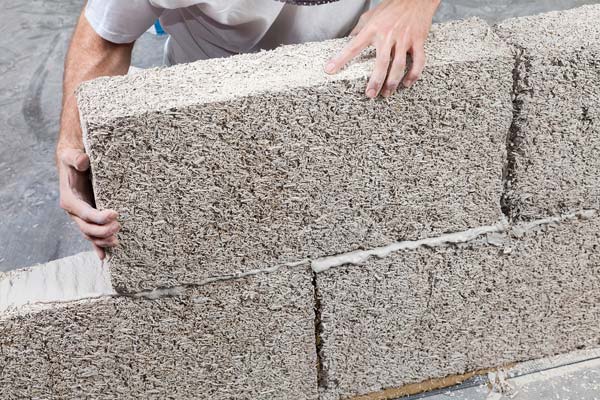
Hempcrete Disadvantages And Drawbacks

Hempcrete Disadvantages:
- Fewer experienced builders available
- Can be expensive
- Material harder to find
- Can take longer to build
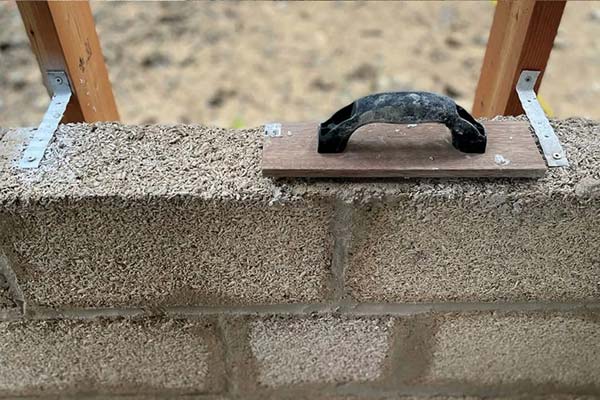
Hempcrete House Design Inspiration

There are many different ways to design a hempcrete house. Some people design these homes with intricate balconies, fancy windows, or luxurious lighting.
Hempcrete House Interior Examples
The interior of your hempcrete house can be designed in any manner that works best for you. Many people choose a very open design with lots of natural light, but you can choose what complements your aesthetic and needs best.
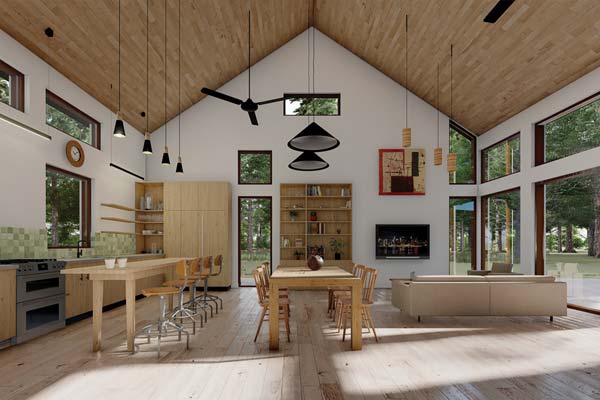
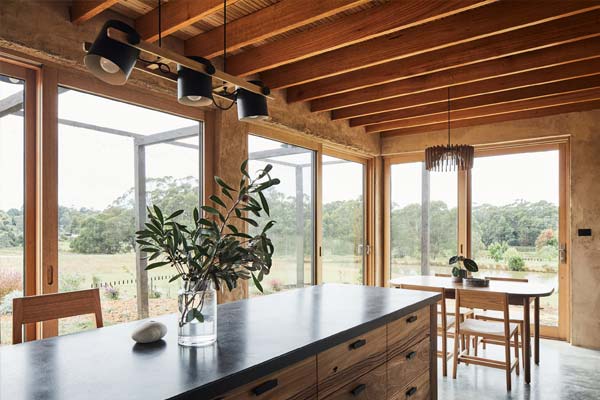
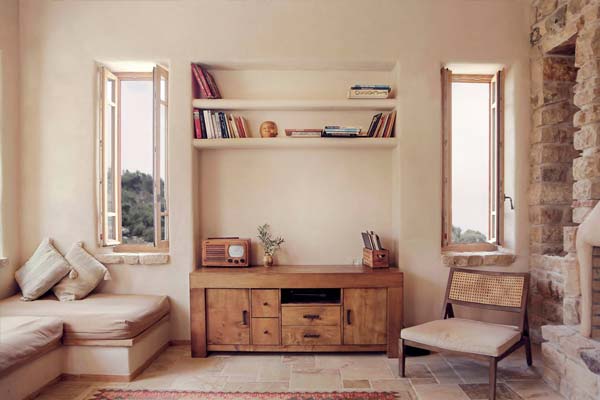
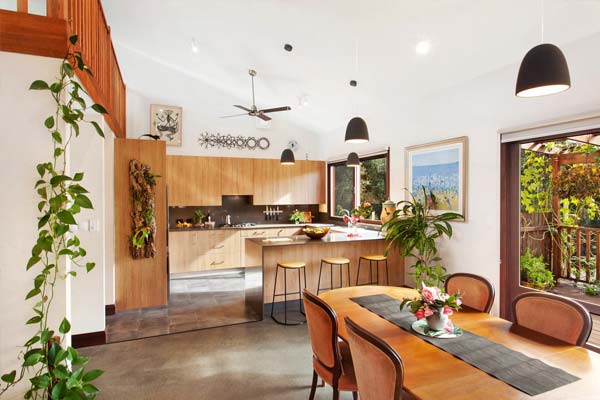
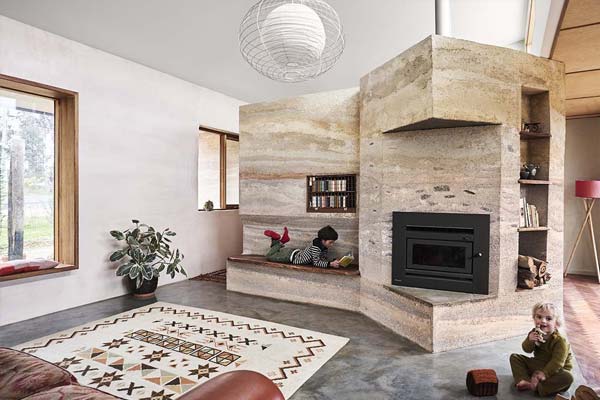
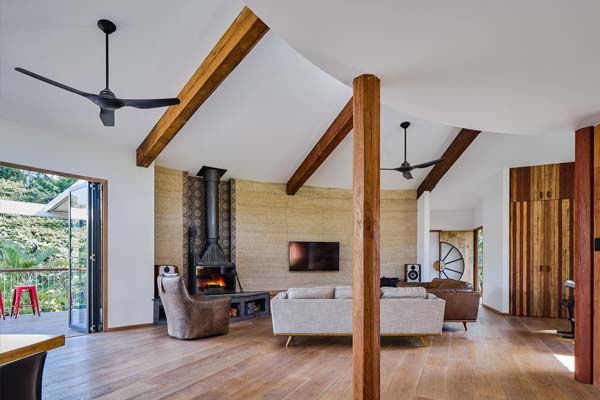
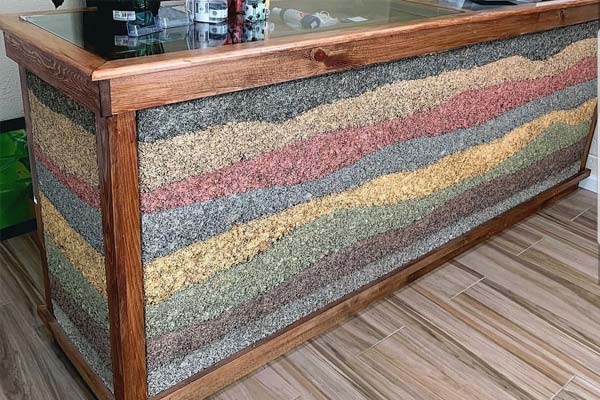
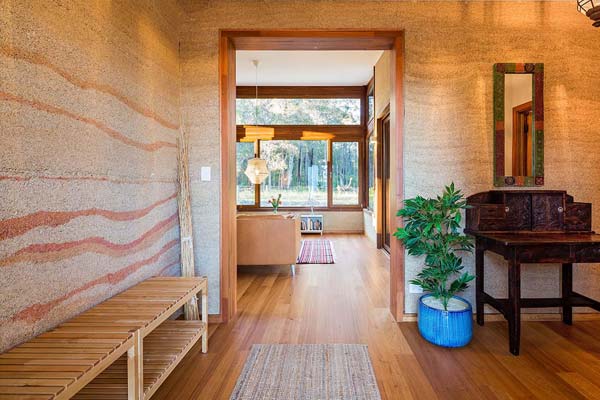
Hempcrete Home Exterior Examples
Beige and cream colors are very common for the exterior of a hempcrete home. You can embellish your exterior walls with many materials, like wood or stone.
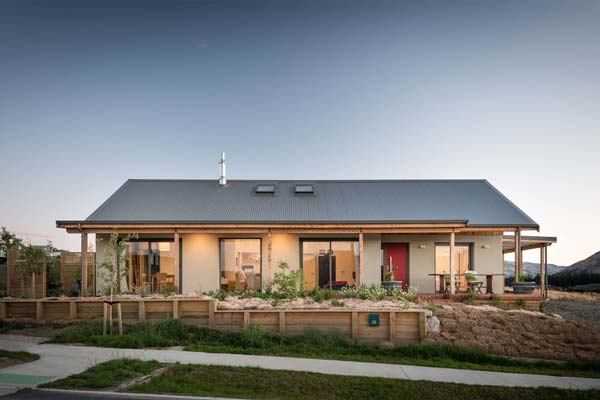
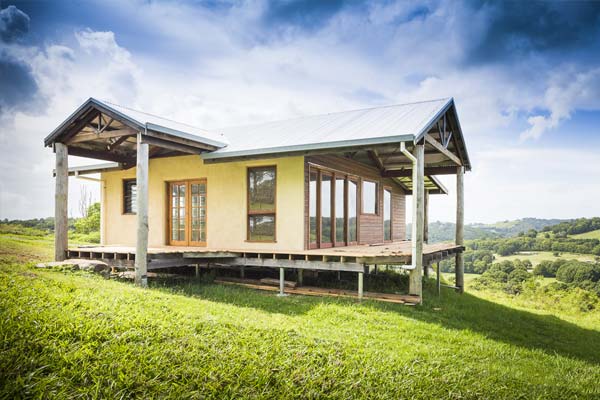
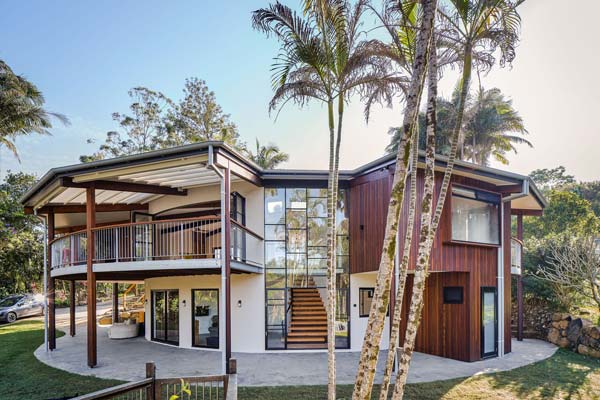
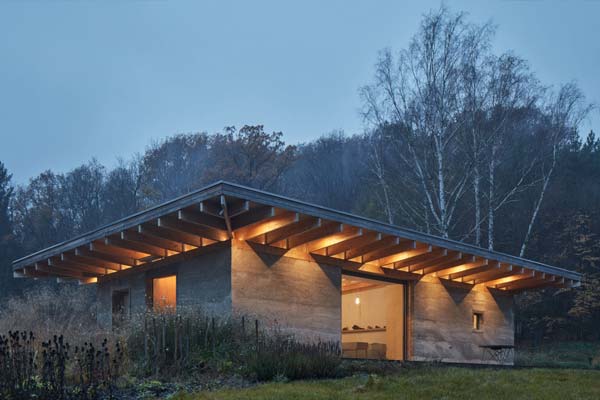
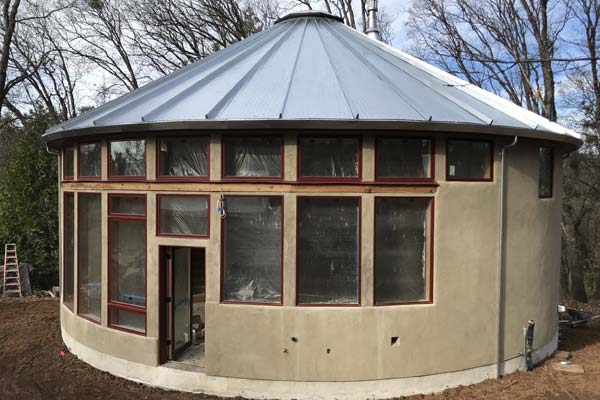
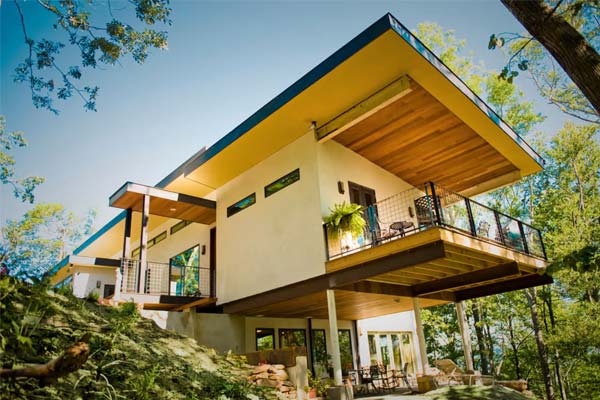
Hempcrete House Floorplans

Deciding on a floor plan is always one of my favorite parts of the building process for any new project. I know it’s my chance to really dream about the way I want my house to look at the end of the day. When building a home, you always have the option of selecting a pre-designed floorplan or building your own floorplan from scratch.
Two-Bedroom Hempcrete Home
This two-bedroom hempcrete house floorplan is ideal for one couple, a family with only one child, or a family with multiple children that don’t mind sharing a room. It’s complete with two closets, two bathrooms, an open concept living room and kitchen, and a mud room.
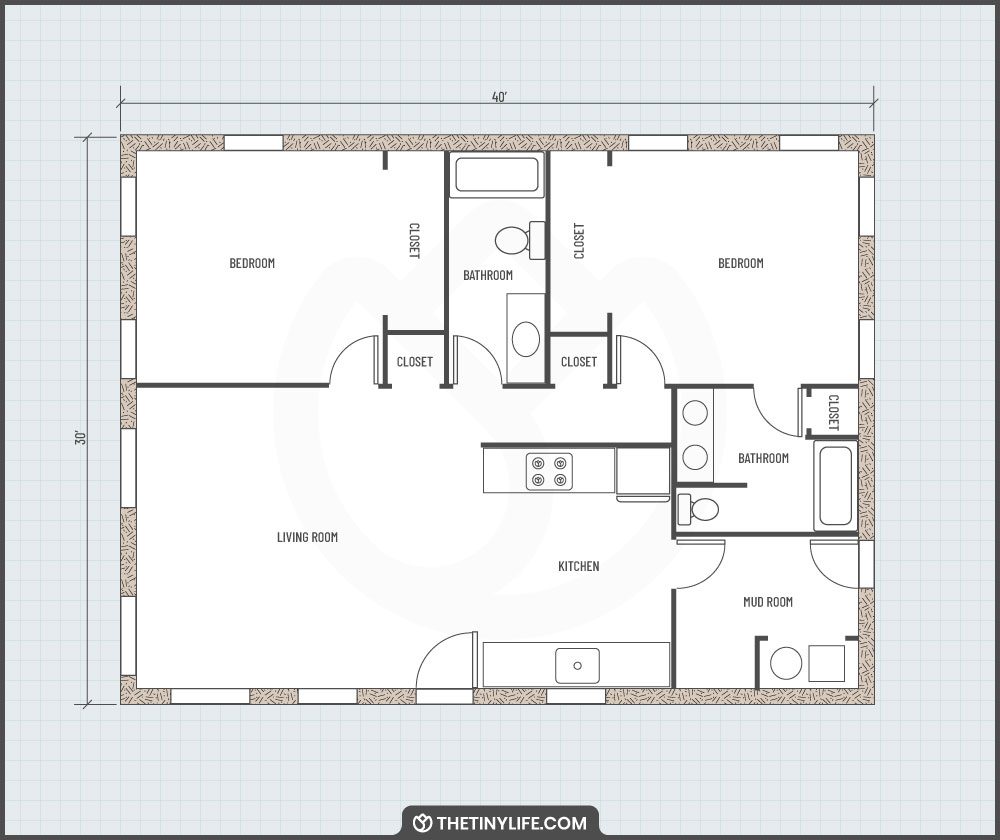
Combined Bedroom Hempcrete House
This hempcrete house floorplan includes two connected bedrooms, one bathroom, and an open concept kitchen and living room. It is ideal for a small family.
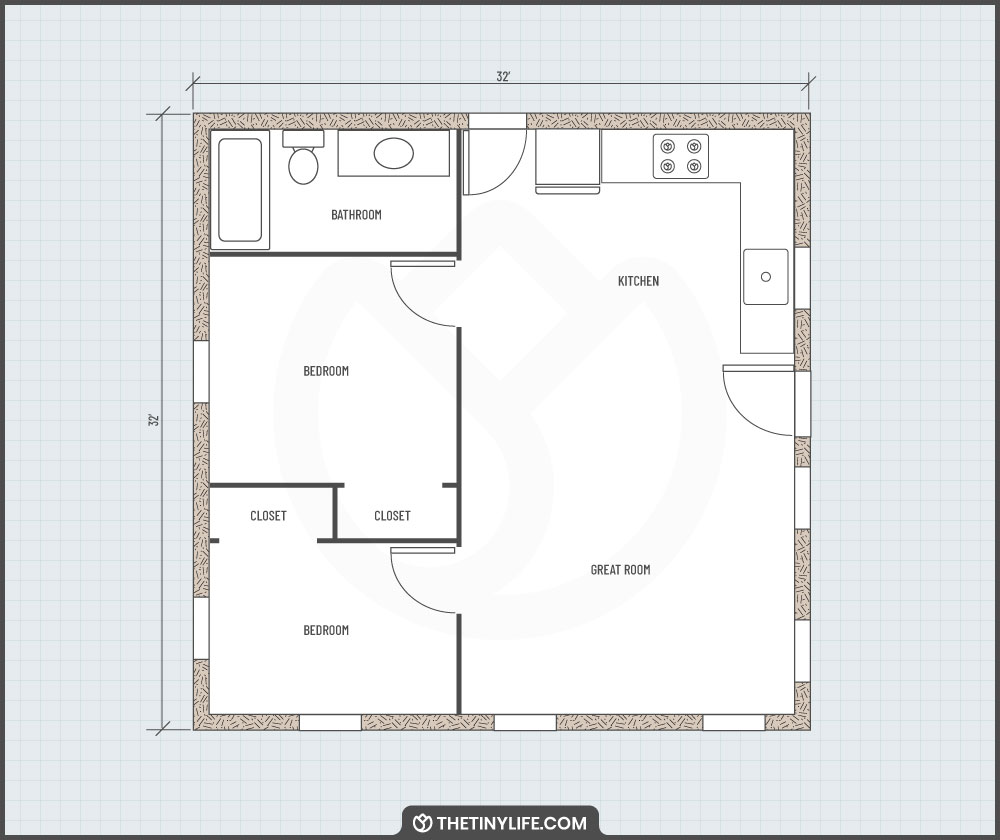
One-Bedroom Hempcrete House With Garage
If you’re seeking a hempcrete house with a garage, this is the floorplan for you. One thing I enjoy most about this floorplan is the way that the laundry room opens up directly into the garage. I also really like the kitchen nook.
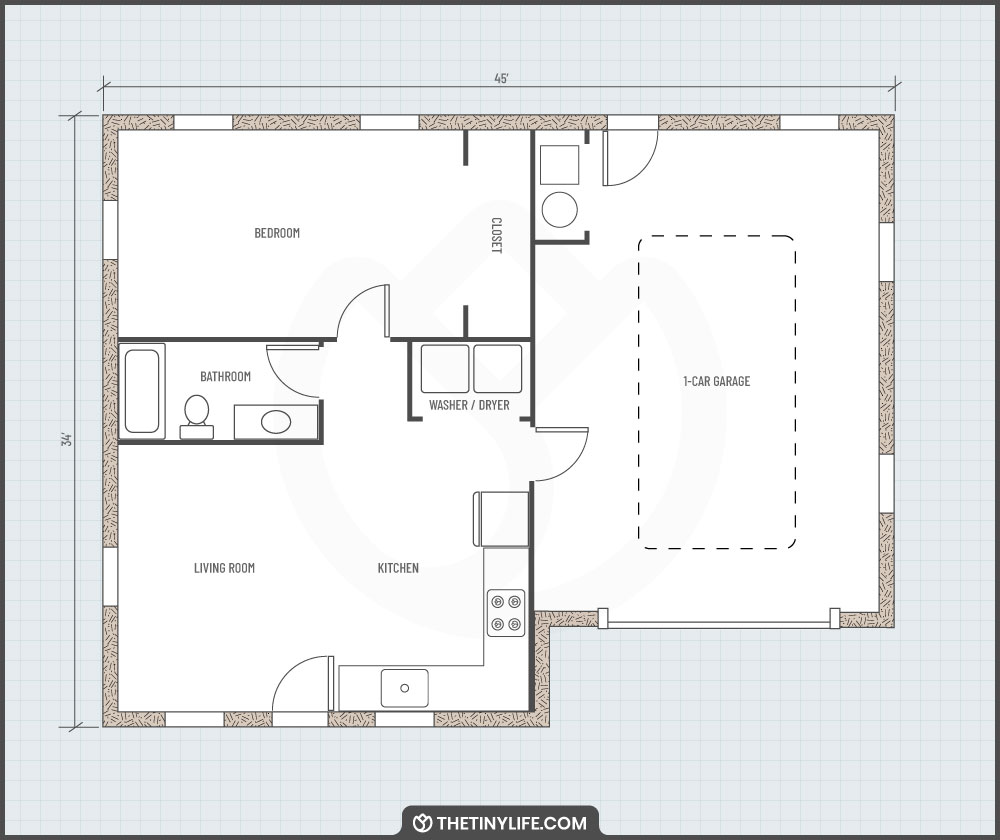
Three-Bedroom Hempcrete House
This last hempcrete house floorplan is ideal for a family of four or bigger. It includes a luxurious master bedroom with a walk-in closet and a utility room. It also includes two single bedrooms with a shared bathroom and a fully connected kitchen and living room.
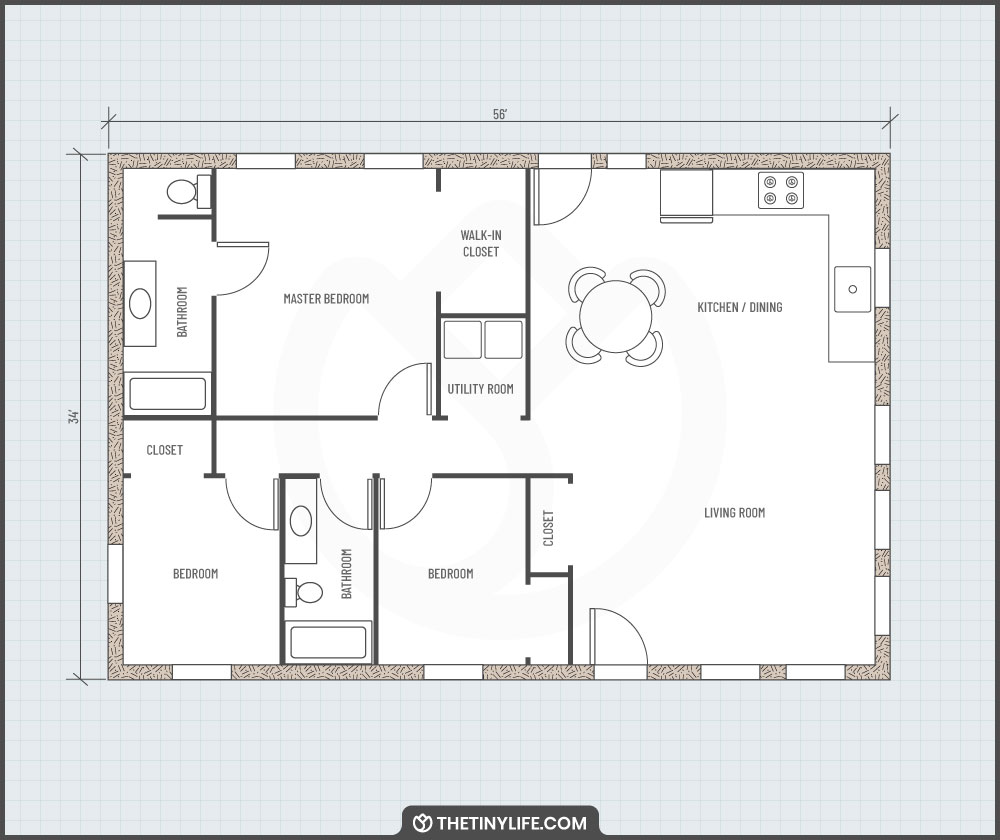
How To Build A Raw Hempcrete House In Eight Steps

Building with raw hempcrete is the most popular method when it comes to constructing a hempcrete home. Creating a home with hempcrete material means forming, mixing, and packing the hempcrete between the wooden boards of your house walls and ceiling.
The hempcrete serves as insulation between the solid walls of the home. When building this way, you’ll need to know how to make your own hempcrete, as you won’t be using pre-formed bricks.
Tools And Materials List
- Hemp hurd / hemp shives
- Water
- Lime
- Wheelbarrow
- House siding material
- Wooden studs
- Hammer
- Nails
- Cement screws
- Chisel
- Power drill
- Saw
- Mixer
- Level
- Tape measure

1 Build The Hempcrete House Foundation
The foundation is the most important aspect of the home. Done well, your hempcrete home could last you up to 50 or 60 years.
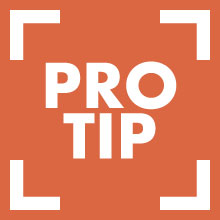
“Do not use any hemp material below ground level. It will decompose! Build your foundation with plastic, regular concrete, or soybean material.”
For hempcrete housing, your foundation can be strip footing, a concrete slab foundation, or a pile foundation. All of these options can work as long as the actual hempcrete and wooden wall studs are completely above the foundation.
2 Build A Structural Frame
To build the frame of the home, use a double stud system to surround the hempcrete substance. This means that your house will have two framed walls to form a wall cavity that is wider than the framing. The advantage of using a double stud system is that it allows for additional insulation and reduces the possibility of heat escaping.






“When building the frame, you want the hempcrete slab to be separated from the lumber so that the hemp grit doesn’t suck all the moisture out.”
Make the wooden frame about 6 inches to 16 inches. The hempcrete material within the frame should be about 158 inches. This is the size of about three and a half standard house bricks. You’ll add the hempcrete material into the house interior later on, after the frame is built and the internal partitions have been added. Make sure to leave space for the windows and doors of the structure when building the framework. This will make the process easier later on.
3 Secure The Home By Installing Diagonal Bracing
Install diagonal wooden bracing between the framework that you’ve already built. Some builders don’t feel that the diagonal bracing is necessary, but I believe it is a significant help when supporting the home. If you install the diagonal bracing on the exterior walls, you won’t have to use OSB boards.






“There’s no need to use treated wood for the bracing or the main frame. Hempcrete is made with lime which is a natural antiseptic that’s extremely alkaline. It will protect the house from insects, fire, and other kinds of damage.”
4 Install Internal Partitions Inside The House Frame
Install vertical, wooden partitions inside each wall of your hempcrete home. Internal partitions will help keep the hempcrete mixture in place once it’s been added to the structure. Install one partition every two feet between the frames. Use nails to fasten the partitions into place.
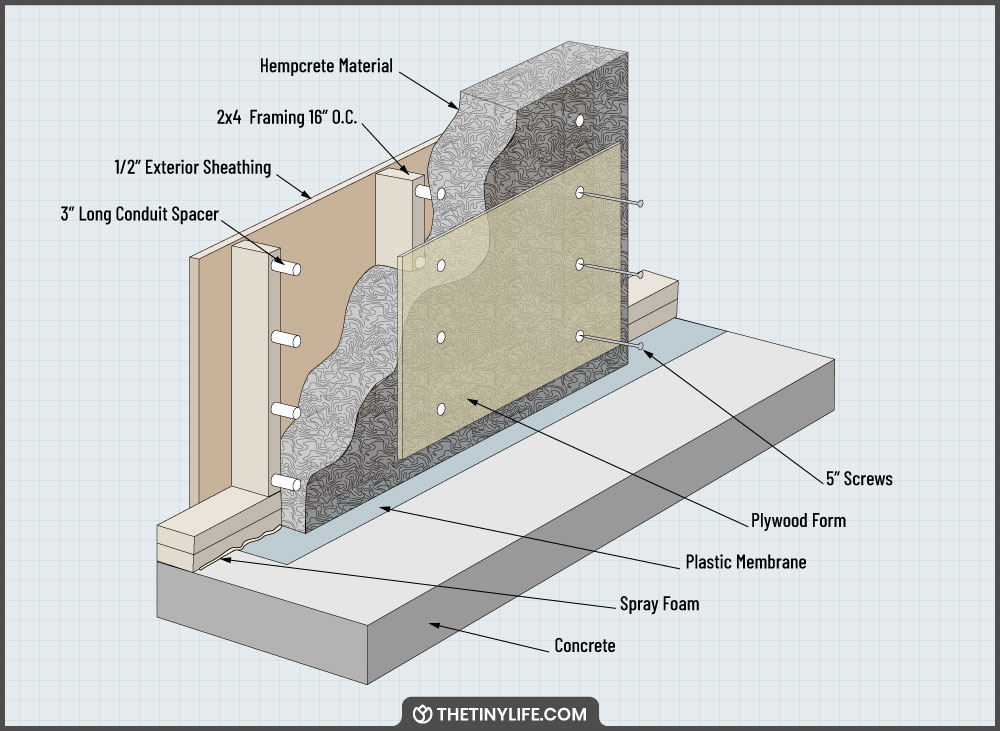

5 Mix, Tamp, And Place Your Hempcrete
You’ll need a mixer in order to properly make your own hempcrete. The mixture should be four parts hemp hurd, one part lime binder, and one part water.
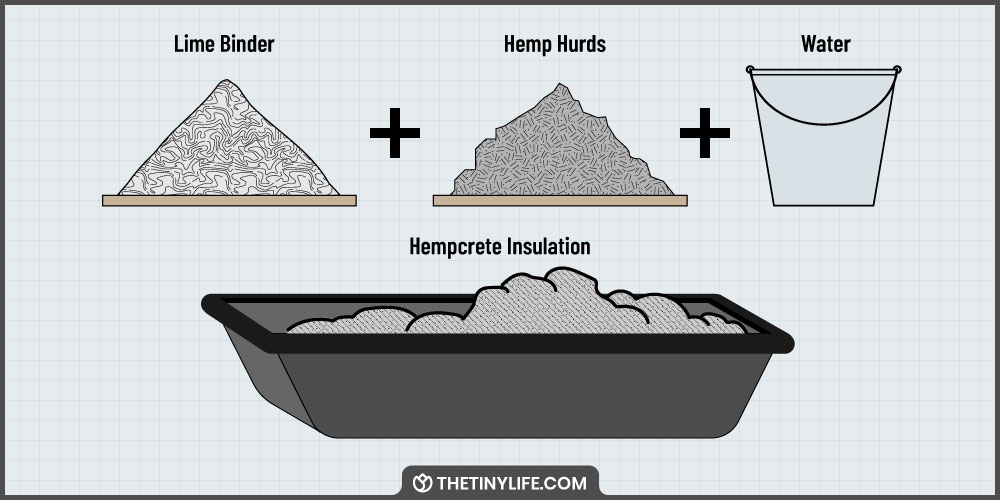

To mix it, place your hemp into the mixer first. Then, add your water and lime binder to the mix. The entire mixing process should take less than one minute! The end consistency of the hempcrete should feel similar to adobe and be sticky to the touch. It should be moist, but not wet and soggy.
After you’ve mixed your hempcrete, place it within the walls of the home. Scoop the hempcrete into the wall frame layer by layer, until the clay material is even with the first internal partition. Then, use a level or a tamping tool to even out the hempcrete.
Repeat this process until your hempcrete material has filled every single wall. When doing this, make sure that the wooden studs are still visible and not entirely covered by the hempcrete. This way, you can see where the screws will go in later.
6 Add A Coat Of Lime Render To The Exterior Wall
Next, add a protective coat of lime render to your exterior wall. This is important because hempcrete material naturally attracts moisture, so it can become damaged over time. Apply a wet façade system to the timber studs. Use stucco, fiber cement, polyvinyl chloride, or any type of house siding to your studs.
7 Install Windows And Doors In Your Hempcrete Home
When building your frame, leave spaces for the windows and doors. Use untreated wooden studs to line the rims of the windows and doors so that installing them will be easy and they will be sturdy and well supported.
Material Options for Hempcrete House Doors and Windows
Window Materials
- Glass
- Fiberglass
- Vinyl
- Aluminum
- Wood-clad
- Composite
Door Materials
- Alder
- Cherry
- Maple
- Hickory
- Mahogany
- Oak
8 Place A Roof On Top Of The Hempcrete
Hempcrete material is not just used to fill in the walls, but also to create the roof. Ideally, a hempcrete house roof and ceiling should be entirely flat with a generous overhang, so the weight of the hempcrete material is evenly distributed. There are a few ways to go about your hempcrete roof, but this is my favorite.
Build the roof frame with wooden studs that cross one another to form squares. Once installed, nail wooden boards to the underside. These boards will also be a visible ceiling face (you can whitewash or stain them if you’d like). Leave small gaps between these boards to allow for expansion due to moisture.






“The hempcrete for your ceiling can be more lightweight than what’s used in your walls. Many hempcrete manufacturers and pros recommend a mix ratio of 1 sack of lime to 200L of hemp — so half the amount of lime used in the wall mixture.”
Get on top of your roof and pour the mixture into the frame. The layer should ideally be about 1 inch thick for proper insulation, and absolutely no less than 4-3/4 inches. Once the hempcrete is evenly distributed, tamp it down lightly, leaving a few centimeters of air space from the top of the hempcrete layer to the top of your frame.
You can then add a board to the top of the roof to finish it (use OSB boards or plywood) or staple a breathable fabric ‘rain screen’ to the top of the frame before you finish it with metal, PVC, or another material appropriate for flat roofing.
It’s worth noting that this type of hempcrete-insulated roof can be created at an angle, giving you more roofing material options, but you run the risk of uneven distribution, so I don’t really recommend it.
Eight Steps To Build A Hemp Block House With Pre-Formed Blocks


The second way to build a hempcrete house is to build it with pre-made hempcrete bricks. With this method, the hempcrete wall construction is done by stacking hemp blocks up like Legos as opposed to filling in the inside of a wall frame with wet hemp cement. This method is often called a hempcrete brick house.
Tools And Materials List
- Pre-made hempcrete blocks
- Pre-made hempcrete frames
- Mortar
- Stucco
- Plaster
- Roofing material
- Bandsaw
- Hammer
- Nails
- Cement Screws
- Power drill
- Tape measure
1 Purchase Hemp Blocks And Frames
The very first thing to do to build this type of hempcrete house is buy the pre-made hemp hurd blocks as well as your plastic or resin frames. There are two sizes of frames. There are heavy duty frames designed for taller, industrial walls of 30 or more feet. Then, there are frames for residential walls of 15 to 20 feet.






“Don’t use wood for your framing material. Wood is not consistent when it comes to compression strength. If there’s a knot in your piece of wood it will throw off the compression. Polyester, resin, or plastic is better for hempcrete brick houses.”
These hempcrete blocks for building houses can be purchased at most local hardware stores. I also like Hempblock USA for purchasing hemp blocks. This company sells individual blocks for $20 per square foot. You can buy a hempcrete house kit, hempcrete blocks, and hemp block frames.
Kits and Builder Options for Hempcrete Houses
Hempcrete Kit Options
Hempcrete House Builders
2 Build The Foundation Of Your Hemp Block House
Building the foundation of a hemp block house is similar to building the foundation of a raw hempcrete house. You can either build your foundation out flat, or use your concrete, plastic, or soybean material to build identically shaped and sized blocks to your hemp blocks.
If you choose the latter method, make sure you use pre-made hemp blocks that are all identical. Make sure all hemp material is above ground to prevent any decomposition over time.
3 Line Rims Of Hemp Blocks With Plaster
To give your hemp blocks extra coating, line the exterior of the blocks withs a kind of wall siding like plaster or stucco. I usually use one or two coats on hemp blocks. Doing this will give the walls of your hempcrete house extra protection from damage.
4 Add Conduit Holes For Utility Installation
Depending on where you buy your hemp blocks from, it’s likely they won’t come with holes already in the blocks. It’s important to drill conduit holes in the center of your hemp block before you stack them so that you have room for electrical wiring before you stack them. Drill the holes 5.3 inches apart.
5 Attach Hemp Concrete Blocks To The Plastic Frames
Attach the hempcrete blocks to the frames one by one like blocks or Legos. Put mortar in between each of the hemp blocks to seal the air gap. If you need to change the size of one of your walls for a smaller section of your home, you can easily use a bandsaw to cut through the hemp hurd and shrink the size of one particular wall.
6 Build Out The Exterior Of Your Hempcrete Wall
Once all of the hempcrete blocks are secured onto the plastic frame, the interior of your hempcrete block house is complete. To finish the outside of the walls, use a stucco finish for the exterior facing wall and a plaster finish on the interior facing wall. Line the top of the hempcrete wall with metal roofing material.
7 Add Windows And Doors
Leave spaces in the hempcrete house walls for windows and doors. Use your bandsaw to cut out these spaces to be the size that you prefer. Line the inside of the window and door spaces with wooden trim.
When installing your windows and doors, it’s important to remember that you can’t take a screw directly into the hempcrete material. It’s too malleable! Instead, use a flangeless style window that is set into the frame instead of screwed into the frame.
8 Build The Roof Of Your Hempcrete Home
The roof of your hempcrete home should be built flat, with a generous overhang, just like the roof of a raw hempcrete home. This method is a little easier, as you only need to build the frame of the roof, then place the preformed hempcrete blocks atop the frame so they don’t fall through. You can finish the roof in the same way though.
Note that hemp blocks can only be placed atop a flat roof. If you want an angled roof, you can choose to use the hemp blocks for your walls only and not the roof.
Building With Hempcrete: Commonly Asked Questions


When building anything for the first time, it makes sense to have questions. Whenever I build something new, I try to address all of my most pressing questions before diving in.
Is Hempcrete Good For Insulation?
Hempcrete is a fantastic insulator. It’s important to talk about the R-value of hempcrete. R-value measures thermal resistance. The higher this number, the better your insulation will restrict heat and keep cool air in. Hempcrete has an R-value of 3.5 per inch, making it a quality insulator when compared to other materials, like foam or fiberglass.
Do Hempcrete Homes Need A Vapor Barrier?
Hempcrete is a pretty good moisture blocker all on its own, so adding an extra layer of protection might not be necessary. There are arguments both for and against vapor barriers in hempcrete houses, so it kind of comes down to the climate and landscape you’re building in, and where the biggest risk lies for you.
While vapor barriers do keep most moisture out of a home, a small amount can always slip through, so any moisture that does make its way into the home will be trapped. This one is really up to you.
Is Hempcrete Fireproof?
Hempcrete is one of the most fireproof building materials. In 2020, an ASTM E-84 test was conducted on hempcrete, which measures the flame speed of fire on the material being tested. Hempcrete scored a 0 to 450 scale, which is the best possible rating when it comes to how fireproof a material is.
Is Hempcrete Waterproof?
Since hempcrete is a porous material made of plant fiber, it’s highly waterproof. As with any material type, a ton of water will still cause damage, but hempcrete is fairly waterproof overall.
How Heavy Is Hempcrete?
As far as building materials go, hempcrete is very much on the lighter side, weighing about six to eight times less than classic concrete. This makes it easier to work with and transport if necessary, but it will also have a significant effect on the overall weight distribution of your home.
Hempcrete Blocks Typically Weigh
- 2-1/4″ block: 10lbs
- 3-1/2″ block: 15.7lbs
- 4-3/4″ block: 20.3lbs
- 6″ block: 25.4lbs
- 8″ block: 33.8lbs
- 12″ block: 50.8lbs
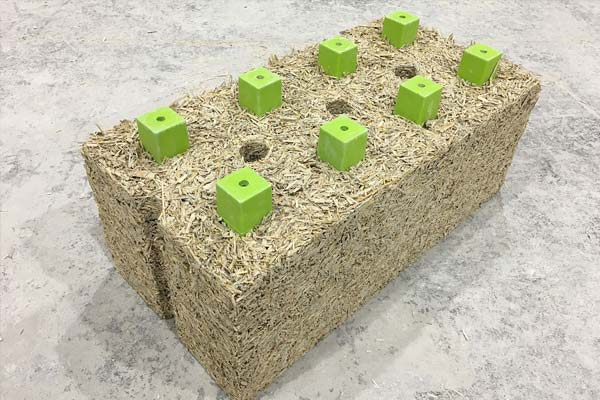

What Is The Cost Of A Hempcrete House?


The cost of building a hempcrete house from scratch is likely going to fall in the range of anywhere from $10,000 to $200,000. Hempcrete material alone usually costs about $0.70-$0.85 per pound, or $5.25-$6.75 per cubic foot of material after installation.
Hempcrete House Cost Breakdown
- Floorplans: $500 – $2,500
- Site & Preparation Work: $400 – $5,000
- Foundation: $5,000 – $20,000
- Framing: $37,000
- Exterior: $35,000
- Utility Systems: $30,000
- Interior: $70,000


At the end of the day, the cost of a hempcrete house is going to depend on the way you build the house, the features you decide to include, the floorplan you use, and what building steps you need to hire out for verses what you’ll complete on your own.
Your Turn!
- How will building with hempcrete improve your home?
- Why is building a house with hempcrete right for you?








Interested in building homes in 3rd word countries
Was interested in hempcrete home I just have little money and some skills in sales I can sell anything I believe in I really believe hempcrete could change homes in the future and would like to offer an idea I live in Prescott Az I currently have a single wide trailer that’s not fixable I would love to put a hempcrete home here with your builders and then I can be a closer for you and show they are fireproof water proof critter proof bug proof and so on my Email is jclintwood1@gmail.com my FB is Clinton wood with a great ful dead football Helmut please consider this for I do have great faith in hempcrete I’m just between things right now and I’ve been told to follow my heart so here I am sincerely J Clint Wood